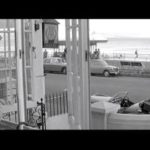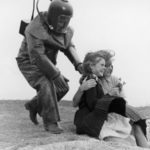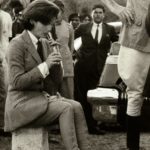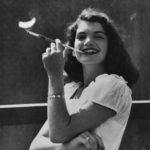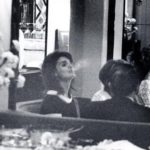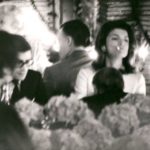In which our editrix showers us with sparkling reminiscences and investigates the roots of our technological decline.
When I was a little girl (she wrote), fireworks were almost as boring as they are now, but they went on a lot longer. I mean the season went on a lot longer. It started around Memorial Day and pretty much lasted through the whole lightning bug time.
 You saw the most fireworks on Independence Day, of course (of course), but when you drove through Kentucky or Tennessee in mid-July you’d still see the little ma-and-pa shops with their charming homespun billboards, and they were doing a land-office business. And they weren’t just getting rid of inventory (like Russell Stover Candies with their post-Valentine’s Day half-price heart-shaped boxes of chocolates) either. No no no! You see, they had all these obscure celebrations down in Chattanooga and Chickasaw Bluffs and Stone Mountain, running clear into August. Every weekend through the South, it was like Disneyland After Dark, only without Annette Funicello and Frankie Avalon.
You saw the most fireworks on Independence Day, of course (of course), but when you drove through Kentucky or Tennessee in mid-July you’d still see the little ma-and-pa shops with their charming homespun billboards, and they were doing a land-office business. And they weren’t just getting rid of inventory (like Russell Stover Candies with their post-Valentine’s Day half-price heart-shaped boxes of chocolates) either. No no no! You see, they had all these obscure celebrations down in Chattanooga and Chickasaw Bluffs and Stone Mountain, running clear into August. Every weekend through the South, it was like Disneyland After Dark, only without Annette Funicello and Frankie Avalon.
In general, fireworks displays were much more spectacular than they are now. The first five minutes were the same stuff you get now: a series of roman candles with a shower of stars. That was just the warmup; they were sampling the inventory for dampness and duds.
Then the magic happened. A blast of blue stars and a blast of grey stars would face off against each other, and as they descended they’d subtly form themselves into the silhouettes of Civil War detachments with bayonets fixed toward each other. That image would drop away, to be replaced by all manner of heroic images (depending on your locale): the Liberty Bell, Stonewall Jackson, Barbara Fritchie.
Near Jacksonville, Florida, the pyrotechnicians were sponsored by the local alligator farm and Studebaker dealer. Come fireworks night, their piece de resistance was a vast crocodilian in green-and-gold, with spiffy white Avanti cars driving into the gator’s red mouth and out its tail. The gator’s eyes bulged and flashed different colors: orange, pink, chartreuse, before exploding into a black hole.
This spectacular vision hovered in the air a second more, then dissolved. We moved on to the finale: a white-on-white bust of George Washington with googly eyes, and a Betsy Ross flag rippling in a pyrotechnical breeze.
Most big fireworks shows ended that way: some combination of Washington and the Stars and Stripes. They weren’t all well done, I must say. Often, if you didn’t know it was George Washington, you might mistake the lopsided image for one of the bad ghosts in the Casper TV program. But the point I want to make here is that at least people had some basic skills and made the effort. You just don’t see that anymore.
What happened to our pyrotechnical know-how? As with so many things, the roots of our decline go back to the Second World War. Pyrotechnicians got tired of being as low-paid seasonal workers. They went to engineering school on the GI bill and started to build serious rockets and missiles in Huntsville and San Diego. Meantime the local fire and police departments took over the Fourth of July duties. Some of them knew the ancient lore of painting with sparks, but most didn’t, and couldn’t be bothered to learn. And since local ordinances kept most fireworks from the general public, there was no point in teaching pyrotechnics along with other arts and crafts at community colleges and day camps.
And this is why, ladies and gentlemen, we have reached the sorry state we are in today. I doubt there is a single soul today who can do a decent alligator or Stonewall Jackson. And if there is such a personage, I fear he may be Asiatic.


